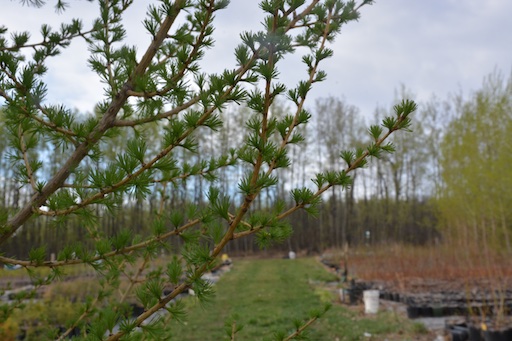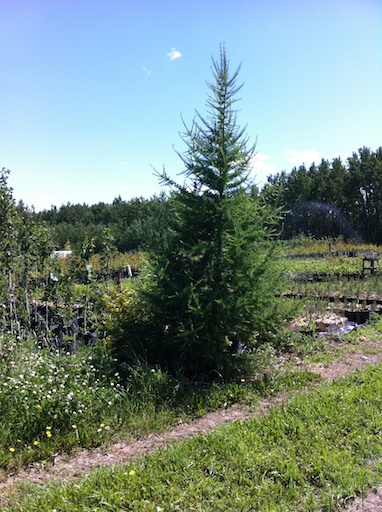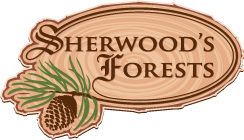
Siberian Larch in fall colour.
Larches
Larix
Larches are one of my favourites. In the winter they are a bit stark, with bare branches, and pale yellow twigs. Some people think they are dead. Look more closely. Each branch has little balls about the size and colour of peppercorns. Wait, and watch!

By the middle of Bud Wee larch needles are already half an inch long.
Early in spring you will see tiny green bits on the twigs, like bits of of pool table felt. Over the course of a couple weeks, each bud turns into a pom-pom of green needles, 20-30 of them in a cluster. When they are young they are a soft pale green.

By summer, they are a thick green haze of silky soft needles.
Over the course of the summer they turn a dark green.

Larch in autumn: closeup. Cones stay on the tree for 2 years. One year growing and ripening, one year dispersing seed on the wind, then they fall to the ground. Cones on the ground can be raked up, or left to decompose. They are about an inch long.
Come fall the needles die, turning a vivid orange yellow. They will hold for a couple weeks this way before falling to the ground.
The native larch, often called tamarack is found only in bogs. Siberian larch is much more drought tolerant, and once established can be ignored.
Western Larch is the one you see in the mountains, especially in B.C. It's not quite as cold tolerant as Siberian, but grows even faster. I have a batch in their second year right now. We have had a really cold winter so if they are alive come spring, this is another option.
Western Larch grows faster and gets larger.
Inventory tables are double rows to make them usable on small screens.
Common name and container in column 1.
Count is how many we think we have left. Price is per tree.
Height will be there next year, we hope.
Conifer -- Larch
| Common Name Container |
Count Price |
Height (feet) |
|
| Larch, Siberian #1 Std pot (3 qt) |
4 $15.00 |
||
| Larch, Siberian #10 Growbag (42 qt) |
3 $80.00 |
||
| Larch, Siberian #10 Growbag (42 qt) |
2 $90.00 |
||
| Larch, Siberian #10 Growbag (42 qt) |
7 $100.00 |
||
| Larch, Siberian #10 Growbag (42 qt) |
14 $120.00 |
||
| Larch, Siberian #10 Growbag (42 qt) |
125 $140.00 |
||
| Larch, Siberian #10 Growbag (42 qt) |
18 $160.00 |
||
| Larch, Siberian #2 Std pot (6 qt) |
570 $25.00 |
||
| Larch, Siberian #2 Std pot (6 qt) |
26 $47.50 |
||
| Larch, Siberian #5 Std pot (15 qt) |
117 $90.00 |
||
| Larch, Siberian 1000 ml Styroblock |
20 $7.00 |
||
| Larch, Siberian 80 ml plug - 15/bundle |
510 \3.25 |
||
| Larch, Tamarack #5 Std pot (15 qt) |
10 $100.00 |
||
| Larch, Tamarack 125 ml plug - 10/bundle |
-30 $3.00 |
||
| Larch, Tamarack 5 gal. pail (20 qt) |
11 $140.00 |
||
| Larch, Tamarack 80 ml plug - 15/bundle |
180 $3.00 |
||
| Larch, Western #1 Std pot (3 qt) |
77 $32.50 |
||
| Larch, Western 1000 ml Styroblock |
40 $10.00 |
||
| Last Update: 2024-Jan-21 | |||
Got something to say? Email me: sfinfo@sherwoods-forests.com
Interesting? Share this page.
Want to talk right now? Call me: (8 am to 8 pm only, please) 1-780-848-2548
Do not arrive unannounced. Phone for an appointment. Why? See Contact & Hours That same page gives our hours of operation.
Back to Top
Copyright © 2008 - 2021 S. G. Botsford
Sherwood's Forests is located about 75 km southwest of Edmonton, Alberta. Please refer to the map on our Contact page for directions.
